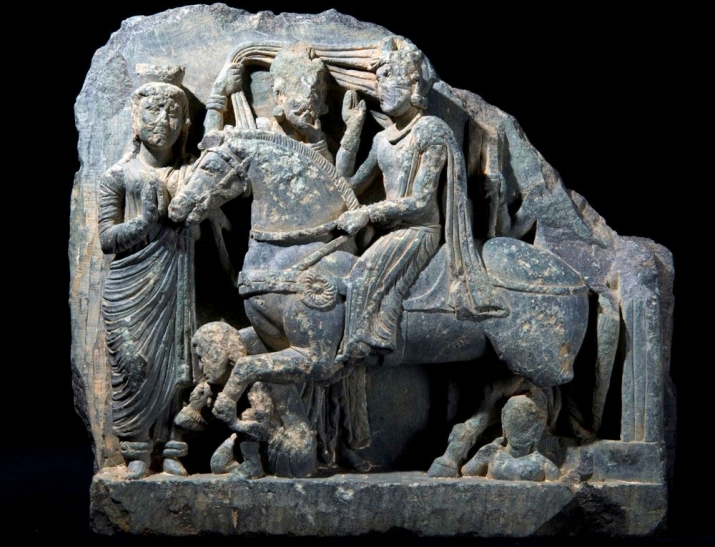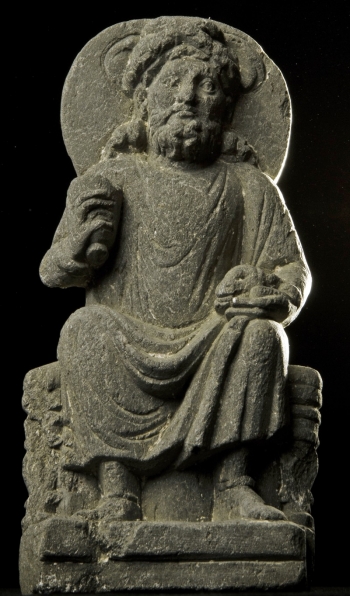In describing the sculpture for The Journal of Inner Asian Art and Archaeology, Luca Olivieri, the director of the excavation at Bazira, said that the figure depicted wearing a crown and holding her hands in veneration before Prince Siddhartha was the town goddess of Kapilavastu, while those supporting Kanthaka’s hooves below were spirits known as yakshas. Behind them is the figure of a man—possibly a deity—with his left hand held to his mouth and his right hand waving a scarf-like garment called an uttariya.
Another carving found at the site depicts a stupa flanked by two columns with lions on top. According to Olivieri, the scene could be a representation of a real stupa that once existed in the Swat Valley. “Real stupas with four columns—topped by crouching lions’ statues [sic]—at the corners of the lower podium have been documented in Swat,” Olivieri told Live Science. In the 1960s and ’70s, archaeologists excavated a similar stupa that is believed to have been in use between the 1st and 4th centuries.
A third carving unearthed in the courtyard has been dated to a time after the shrine was damaged in an earthquake. Olivieri described the relic as depicting “an unknown deity, an aged male figure sitting on a throne, with long, curled hair, holding a wine goblet and a severed goat head in his hands.” He noted that the figure resembled images of Dionysus, the Greek god of wine, fertility, theater, and religious ecstasy.
















